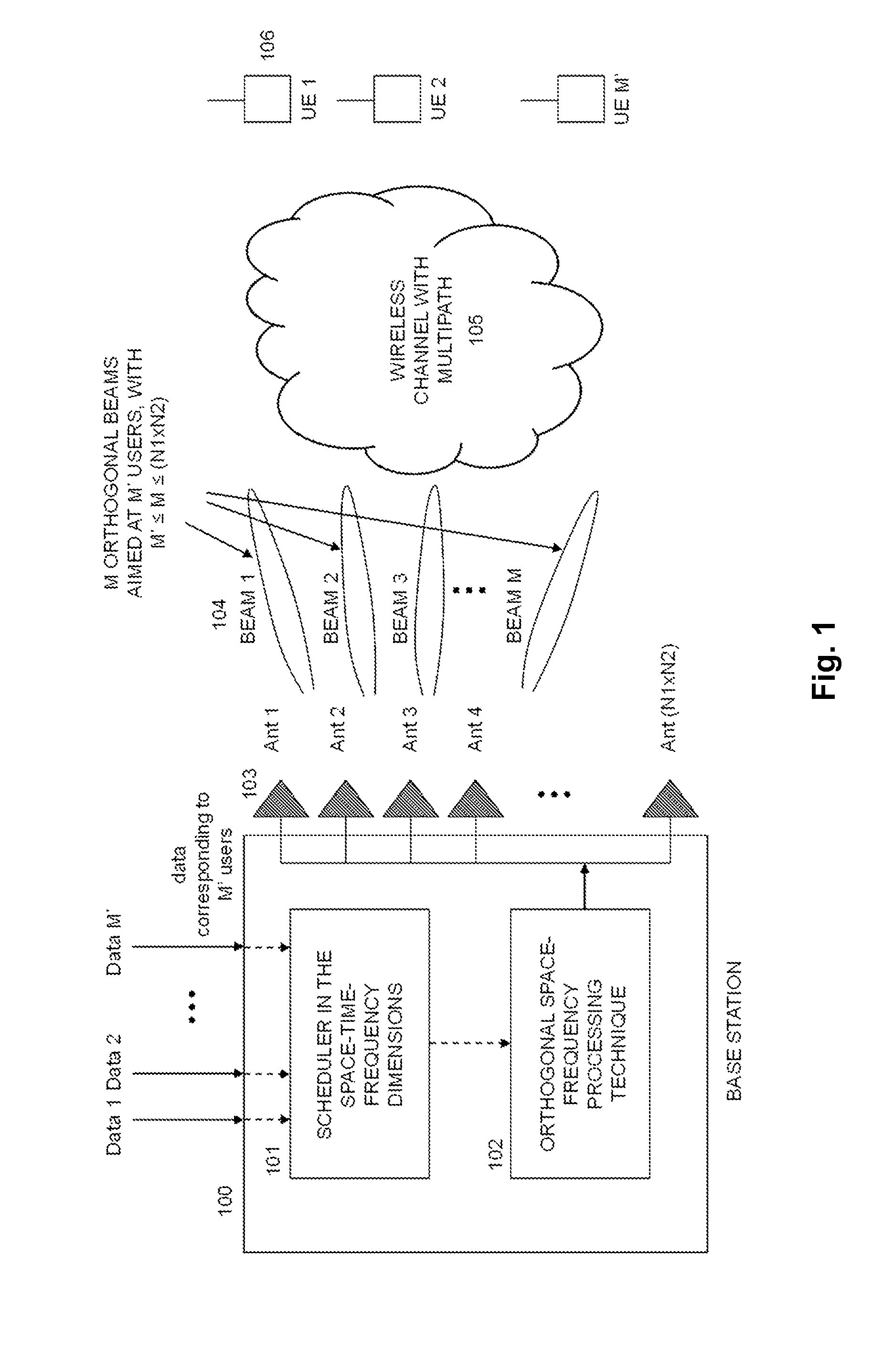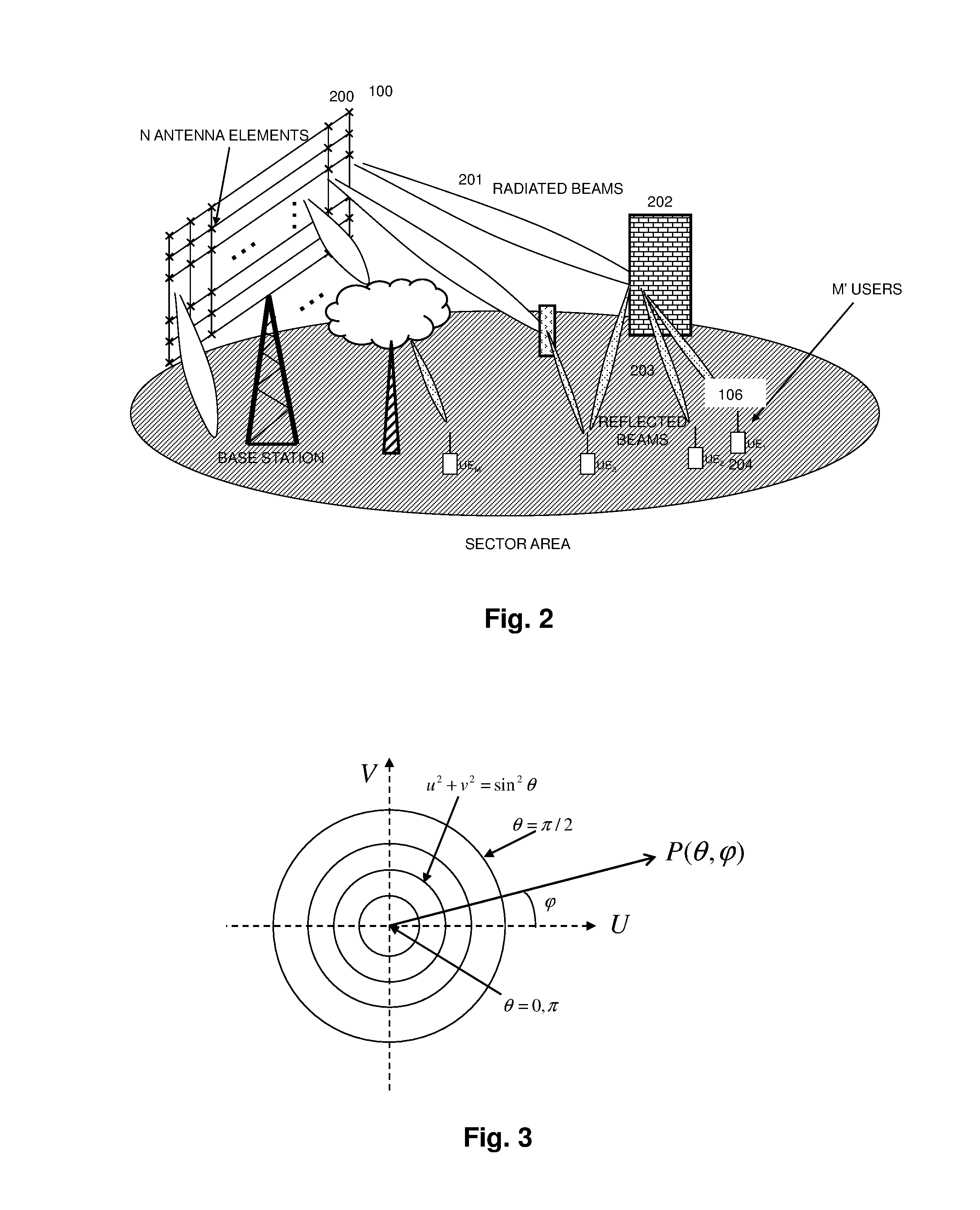Method for performing multiple access in wireless OFDM cellular systems over multipath wireless channels considering both space and frequency domains, base station and computer programs thereof
a wireless cellular system and multi-path technology, applied in the direction of individual energised antenna arrays, transmission path division, wireless commuication services, etc., can solve the problem that the massive mimo system cannot exploit any extra antennas for simultaneously serving higher numbers of users, the limited number of antennas precludes the ability to address more than eight single-layer users, and the radiated antenna pattern directed towards the intended user does not enable fully orthogonal separation of resources
- Summary
- Abstract
- Description
- Claims
- Application Information
AI Technical Summary
Benefits of technology
Problems solved by technology
Method used
Image
Examples
Embodiment Construction
[0030]Embodiments of the present invention address these and / or other needs by providing a combined space-frequency multiplexing technique for multi-antenna systems applicable to cellular scenarios with significant multipath that extends the orthogonal space-frequency division multiplexing approach proposed in patent application EP-A1-2806576, by making the necessary changes in realistic cellular scenarios in order to overcome the loss of orthogonality caused by multipath.
[0031]To that end, according to an embodiment there is provided a method for performing multiple access in wireless OFDM cellular systems over multipath wireless channels considering both space and frequency domains, wherein a base station equipped with a large number of antennas according to a two-dimensional rectangular array has complete knowledge of the channel characteristics between it and each one of a number of cell users, said rectangular array comprising N1 antenna elements along one axis with a regular s...
PUM
 Login to View More
Login to View More Abstract
Description
Claims
Application Information
 Login to View More
Login to View More - R&D
- Intellectual Property
- Life Sciences
- Materials
- Tech Scout
- Unparalleled Data Quality
- Higher Quality Content
- 60% Fewer Hallucinations
Browse by: Latest US Patents, China's latest patents, Technical Efficacy Thesaurus, Application Domain, Technology Topic, Popular Technical Reports.
© 2025 PatSnap. All rights reserved.Legal|Privacy policy|Modern Slavery Act Transparency Statement|Sitemap|About US| Contact US: help@patsnap.com



